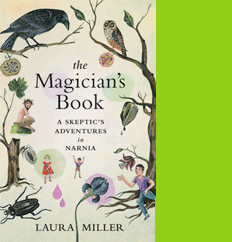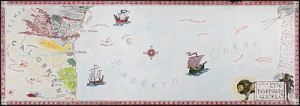Haunted Images: Finding a Way to Story
I don't expect I'll ever write a novel with fauns, lions, or even witches in it, but I've been inspired by reading A Lion, A Witch, and a Wardrobe by C.S. Lewis and Laura Miller's The Magician's Book: A Skeptic's Adventures in Narnia. Miller discusses her changing reactions to a series that enchanted her as a child, then later left her feeling betrayed when the Christian subtext was pointed out to her. After investigating what might give these books their power, she returns to some allegiance with the young reader she'd been. "At nine I thought I must get to Narnia or die. It would be a long time before I understood that I was already there."
I was moved by the information she provided about how Lewis created the series. She refers to the youth he described in his autobiography, Surprised by Joy, in which joy isn't synonymous with something jolly, but is tinged with yearning. He remembers a flowering currant bush, and a toy garden his brother brought into the nursery, and the sense of longing –"though not for a biscuit tin filled with moss" – that stayed with him, and recurred dramatically on other otherwise ordinary days. This might be the feeling he ascribes to Lucy as she receives her gift of a magic healing ointment. It's "the gladness you only get if you've been solemn and still."
We can't predict such feelings, or do much with an analysis, though I like Miller's suggestion that any small garden contains wild green growing things, just as a short story can seem to contain life. What's most interesting to me is the connection of haunting memories to C.S. Lewis's creative process, which was also dependent on imagery. Lewis and his brother played in a wardrobe when they were little boys. He dreamed of a faun under a gas lamp in a snowy wood when he was sixteen. He began a story called "The Lion," then put it aside. During WWII, children lived in his big house to escape bombing in London. All of these images stayed in his memory, and came into the books with a wardrobe that's a delightfully specific portal, with its smells and softness of fur coats that can make the children hot and sticky. No one knows why it's sometimes just a wardrobe and sometimes it lets one through to another world.
In "Three Ways of Writing for Children," Lewis wrote about how he he thinks through pictures, comparing writing to bird watching. He says imagination "stirs and troubles" the reader with a "dim sense of something beyond his reach." Much like what he called joy. We'll never know exactly how this felt for him, but why not let it inspire our own creative urges? When I look back to being a girl, I remember that sometimes quiet sometimes yearning self: the girl who felt sometimes shaky, but just as sure that someday things would change. Maybe that's what I'd call joy, and like his, it wasn't cheery, but had a strength that came from stillness. I accepted being shy and sometimes lonely, and found solace in reading books. Now, when I write my own, that girl is with me. Both shaky and sure, focusing on small things, and trying to hold a sense of something bigger beyond.













